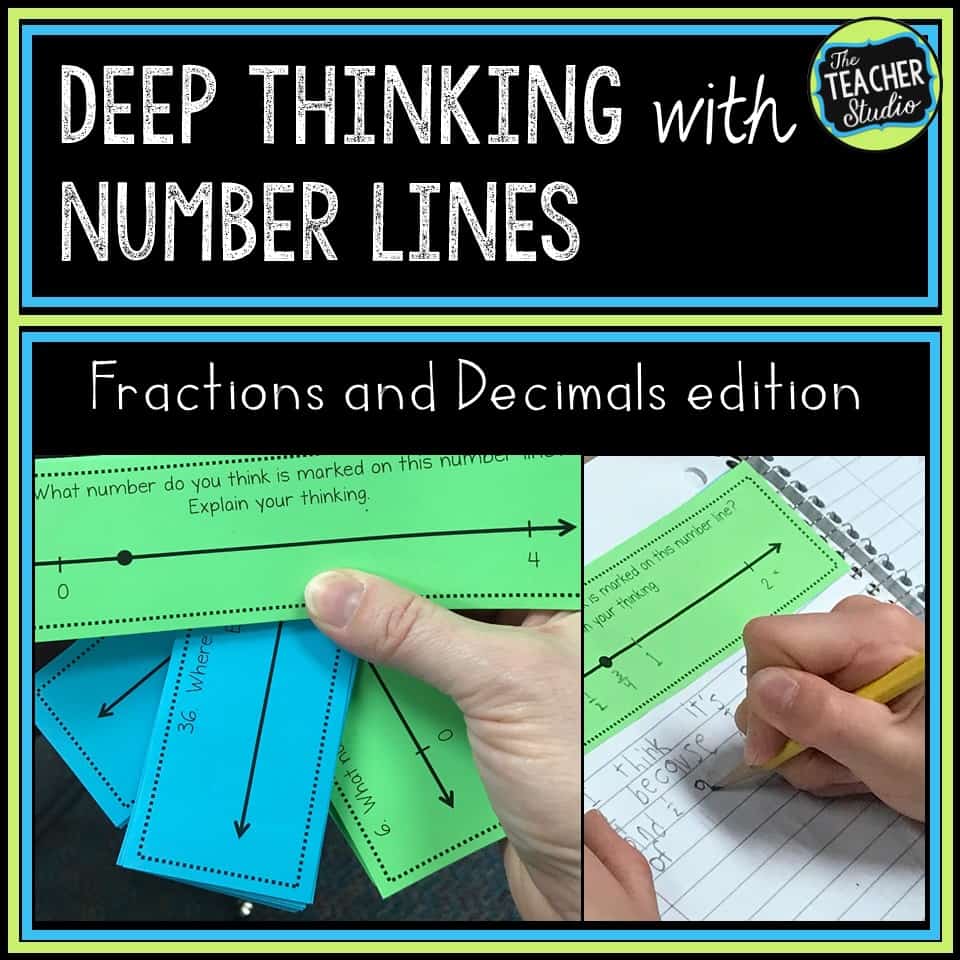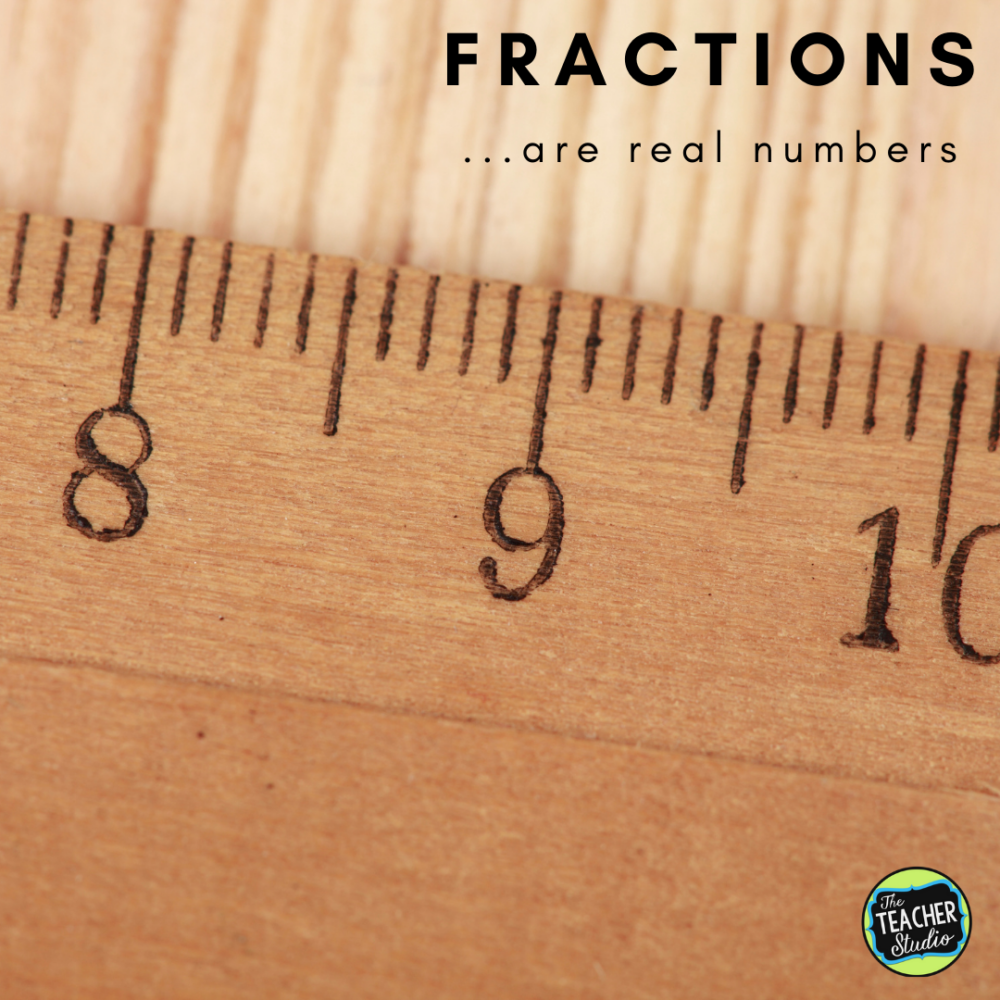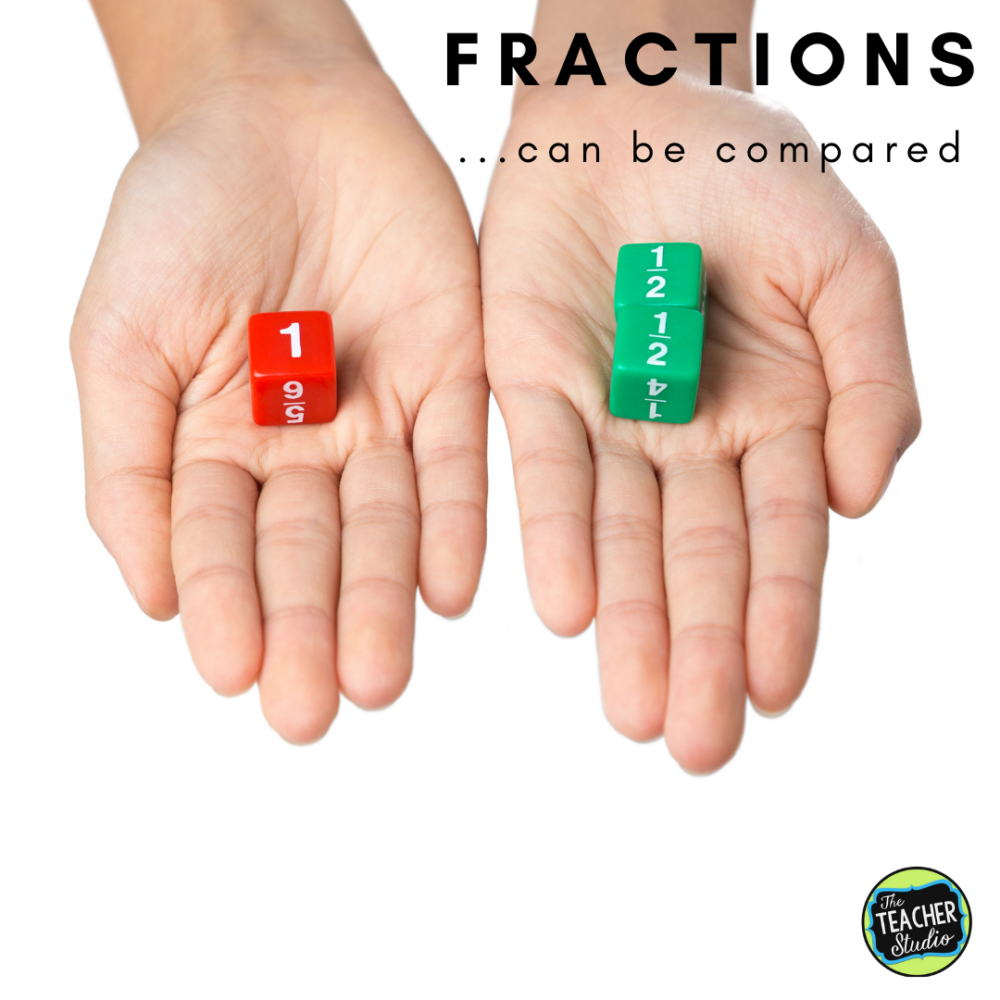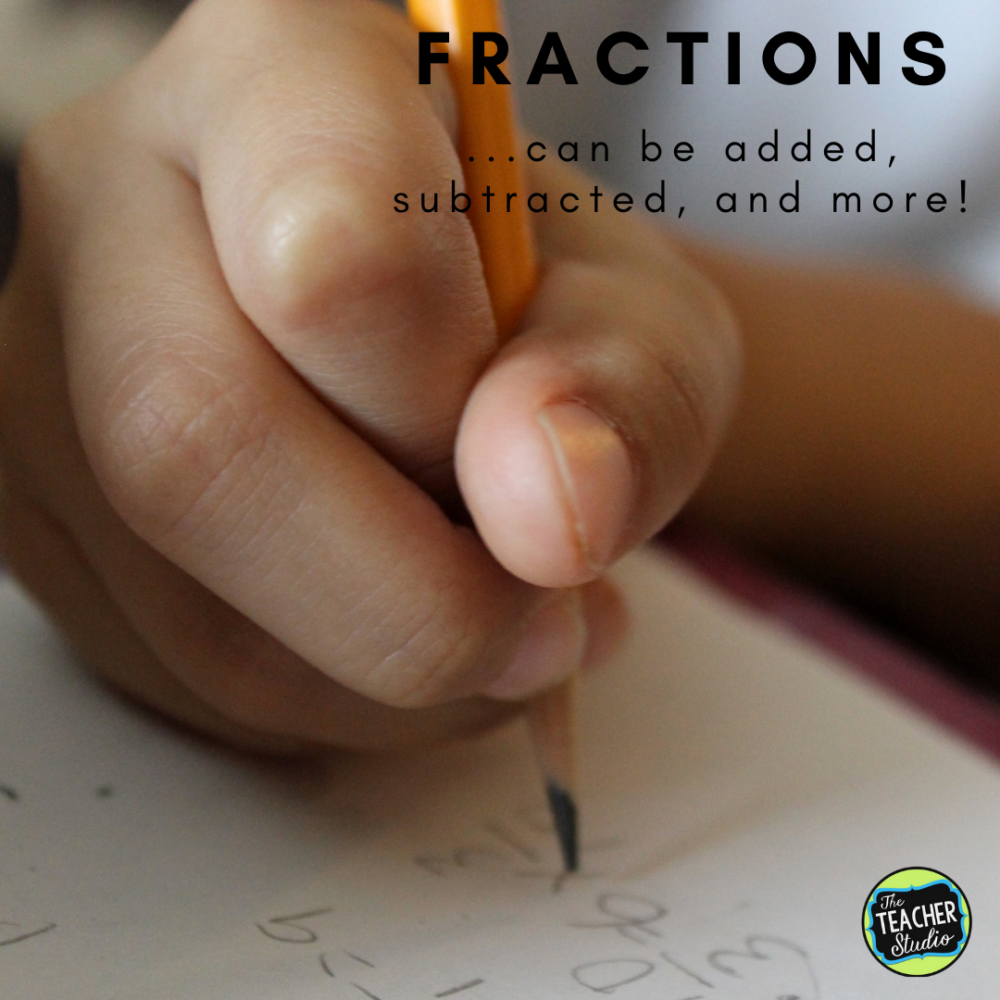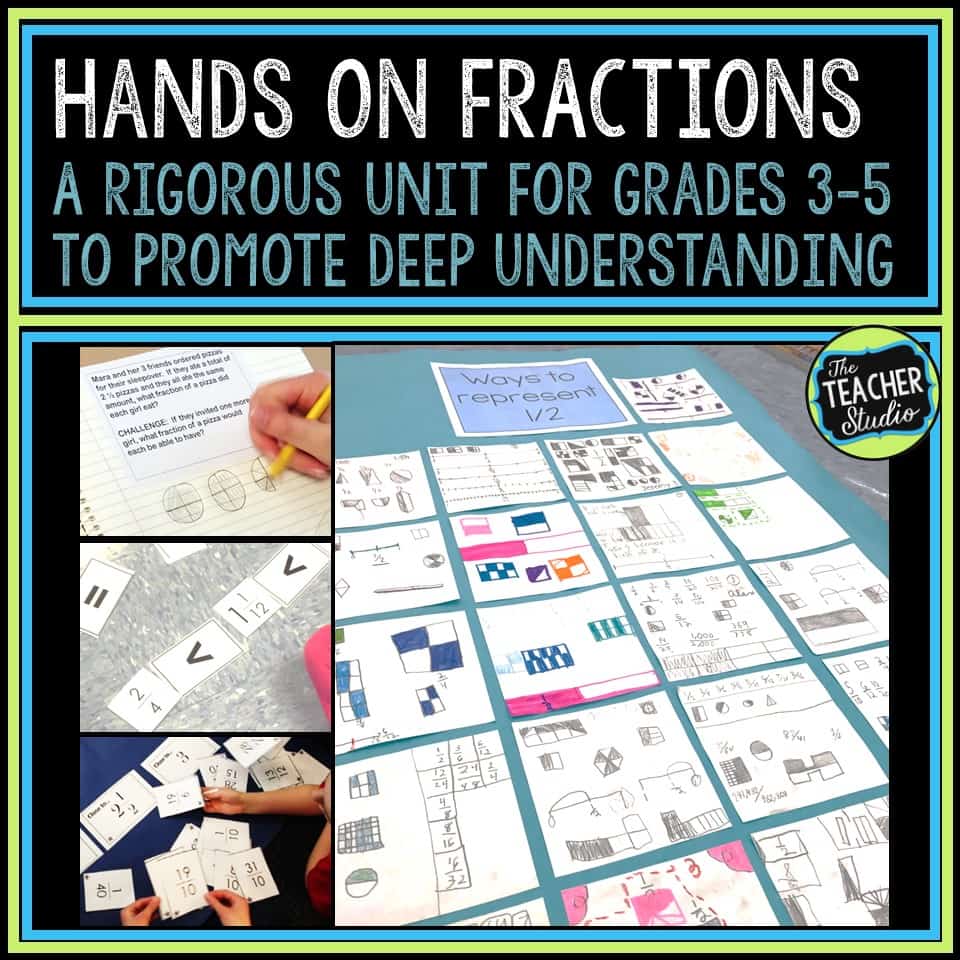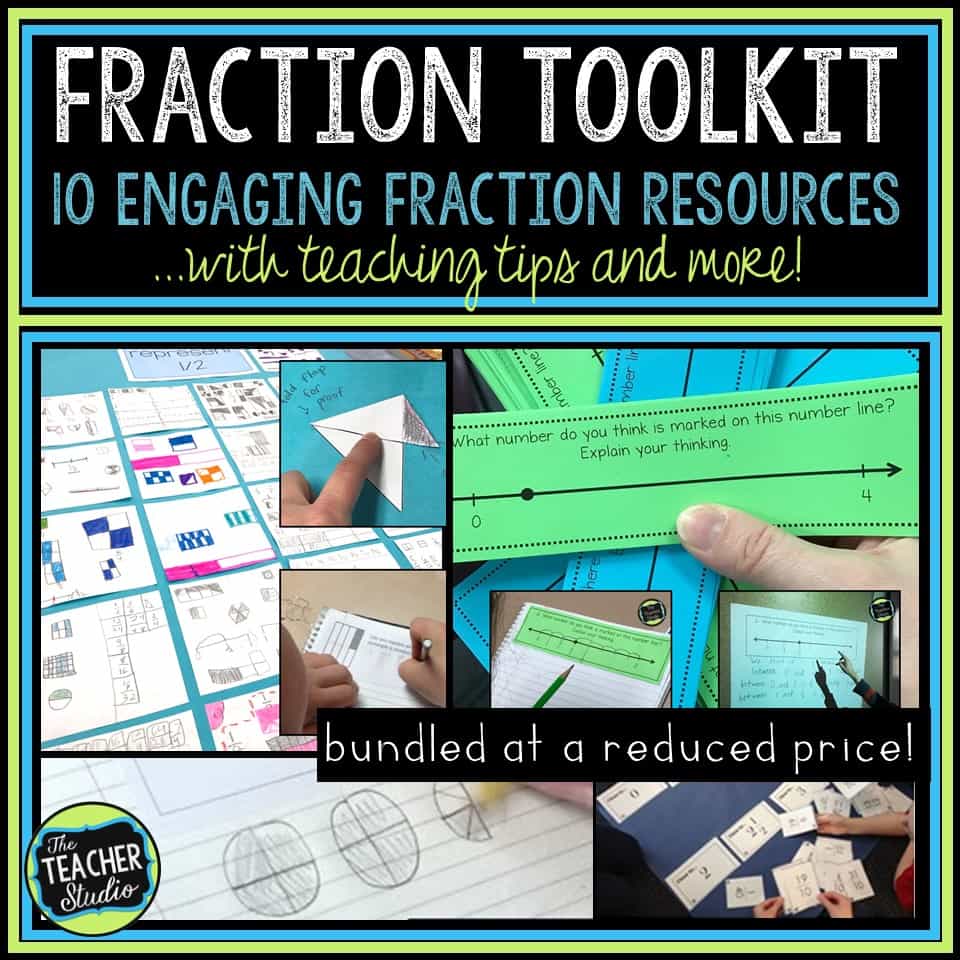Teaching fractions is a challenge for many teachers, and so much of it is because WE didn’t have good fraction instruction! I hope this blog post can give you a few key points to ground your thinking about fractions and the best approaches to take when teaching about these important numbers!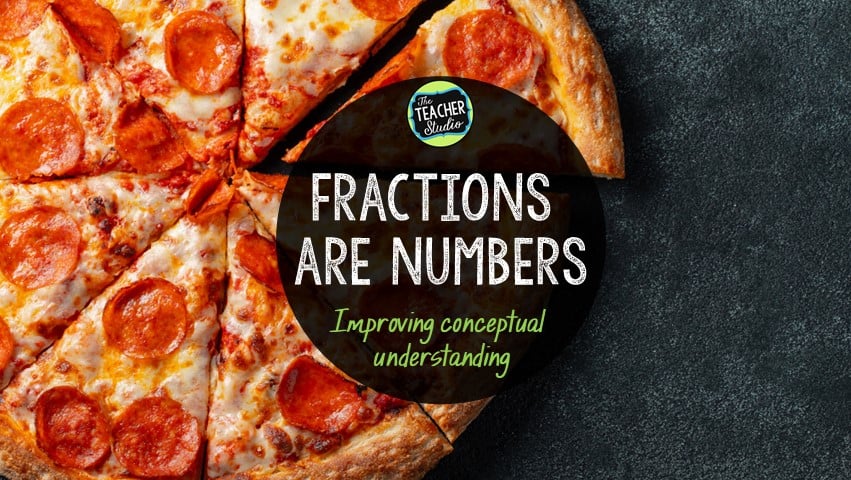
Fractions…more than pizza
So many textbooks focus on fractions of areas/regions. Students are asked to divide shapes and shade shapes…but when we focus only on this part of fractions, we do students a huge disservice. When students see “fractions” as the act of dividing a shape, they miss the big idea–that fractions are the numbers that we can use to show numbers between whole numbers.
Fractions are numbers.
That’s right–fractions are numbers. Fractions are not shading exercises. Fractions are not writing “a number on top of another number”. Students have to be exposed to the fact that fractions help us be precise with amounts. We don’t always have one full inch. We don’t always have one complete pizza. It is critical that we give students a way to represent these “parts” so that we can identify ANY quantity. Try something. Ask your students, “What are fractions?” See what you get.
Because fractions are, indeed, numbers–we can represent them in different ways. Sure, we can shade in pictures to show fractional amounts.l We can also have students draw their OWN representation of fractional amounts (FAR more powerful). We can also make sure students understand fractional notation so when they write 3/4 they understand that there is a REASON for the notation. Finally, we can help students build on their understanding of number lines with WHOLE numbers but modeling how we can represent fractions on number lines as well.
Fractions can be ordered and sequenced
Because fractions actually are “real numbers”, we can treat them as such. We can compare them. We can sequence them. With careful thinking and reasoning, we can help students visualize fractions and use their math reasoning. We do NOT need to teach students tricks and rote computation–at least not until we have built their conceptual understanding.
We can perform “operations” on fractions
So, if fractions are a part of this world of “real numbers”, then we can treat them as such. We can add them. We can subtract them. If students understand that 5 x 3 is five groups of three, then they can also learn that 5 x 2/3 is five groups of two-thirds. When we provide only computation rules, we take away the thinking and the sense-making.
I hope this gives you a little food for thought, and perhaps a centering idea. If we help students recognize that fractions are actually numbers that represent real amounts, we are helping build a foundation for understanding that will take them into their more advanced math work.
More Fraction Fun!
I have so many blog posts that focus on fraction understanding. Just search the sidebar for more! To get you started, here are a few!
- THIS POST is all about balancing the types of fraction activities we do with students.
- THIS POST is about using a gradual release approach while teaching fractions.
- Want to learn more about math sorts? Check out THIS POST for ideas and inspiration!
There are literally dozens more–so snoop around!
Looking for some resources to help YOU teach fractions?
Click HERE or the image below for my fraction unit–16 lessons to build conceptual understanding.
Click HERE to see my huge fraction toolkit with 10 great resources to build fraction understanding.
Click HERE to see my fraction and decimal number line resource to help you guide students in their understanding of fractions on a number line. 